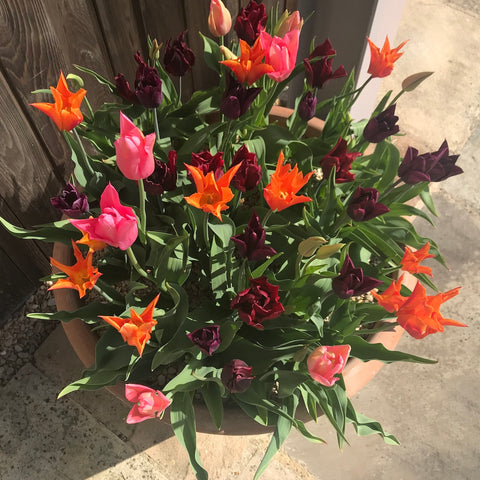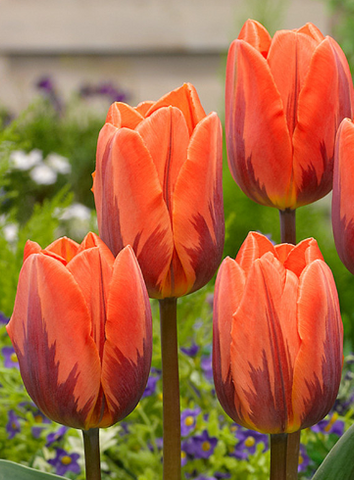
Planning Ahead for Spring
Lesley Ann SandbachNow is the time to order spring-flowering bulbs.
I have just sent in my usual large order for tulips and narcissi. Every year I think I won’t need many and every year I buy upwards of 500 for my containers. Over the years, I’ve taught myself a few things about bulbs in pots...
The first is, don't rush to put tulips in. The soil is still too warm and you can wait until late November to get them into the earth; they are more subject to disease in warmer ground. When you get them planted, these are a few tips.
Single varieties:
- If you are planting one variety, ignore advice about spacing out bulbs and follow the Great Dixter method of cramming in as many bulbs as possible – if they touch it doesn’t matter
- In my copper pots, I shall plant ‘Ballerina’, a graceful, orange lily-flowered tulip which will look lovely against the verdigris of my copper pots. It will flower in late April/May
- In the terracotta pots along the terrace, a mixture of ‘Purple Doll’ and ‘Doll’s Minuet’ – it’s a combination I’ve used before and I love the fuchsia-pink of ‘Doll’s Minuet’ with the deep purple, green-flamed ‘Purple Doll’

Tulip ‘Ballerina’ in combination with ‘Lasting Love’ and ‘Pink Perfection’ – all lily-flowered tulips

‘Purple Doll’ and Doll’s Minuet’ are a cheerful combination

‘Exotic Emperor’ looks wonderful in terracotta pots along the front of the house
‘Lasagne’ planting:
- If you want successional flowering, layer your bulbs starting at the bottom with the largest and latest flowering planted at a depth of 15cms; cover the first layer with compost and add the second layer of smaller, earlier flowering bulbs such as narcissus, another layer of compost and, finally, the smallest and earliest flowering, such as iris reticulata
- If you are using several varieties, leave some space between the bulbs so that the lower ones can make their way to the surface
- This year I am using tulip ‘Princess Irene’ as my base flower, with its unusual combination of salmon, orange and burgundy flowers from late April; Cyclamenus narcissus ‘Surfside’, a small creamy white flower with reflexed petals, as my middle layer and iris reticulata ‘Harmony’ at the top, mulching with gravel afterwards – I think the gravel looks neat as well as providing a final layer of protection for the bulbs

Tulipa ‘Princess Irene’

Cyclamenus narcissus ‘Surfside’ planted under hydrangea ‘Little Lime’

Iris reticulata ‘Harmony’
When the bulbs have flowered, I take them out with their top growth, replenish the compost and replant the pots for summer. The bulbs can be dried off with their top growth in the shed and then in autumn, cleaned and replanted. The narcissi will flower reliably for years but iris reticulata and tulips (with the exception of a few varieties, including the lily-flowered ones) do not come back reliably. I put the tulips in the parts of the garden that are left unmown, where some will come back, and iris reticulata in a dry corner where they may thrive – I’ve seen wonderful, established displays under trees where I wouldn’t have thought they would grow.
